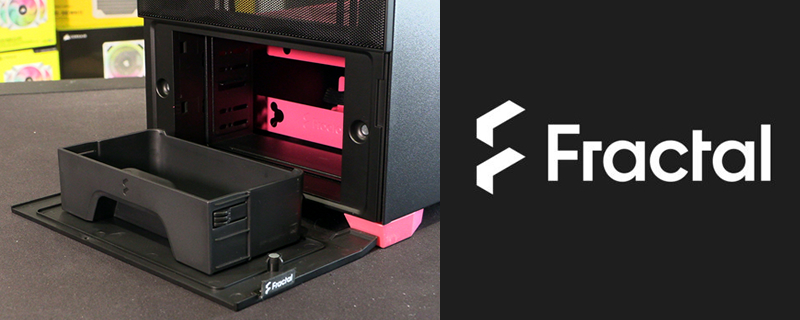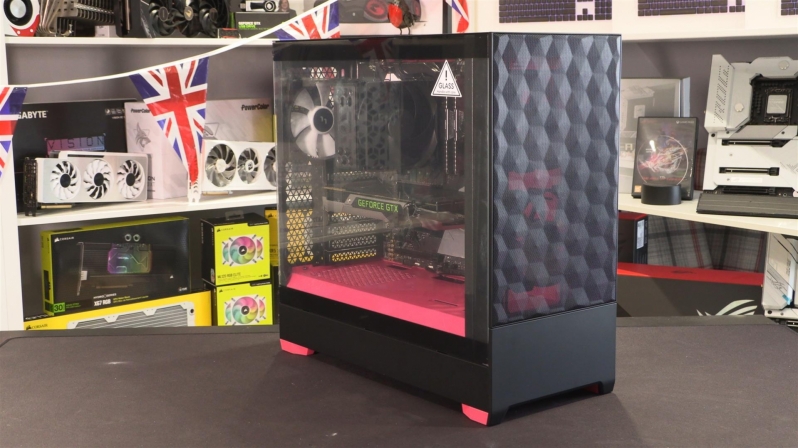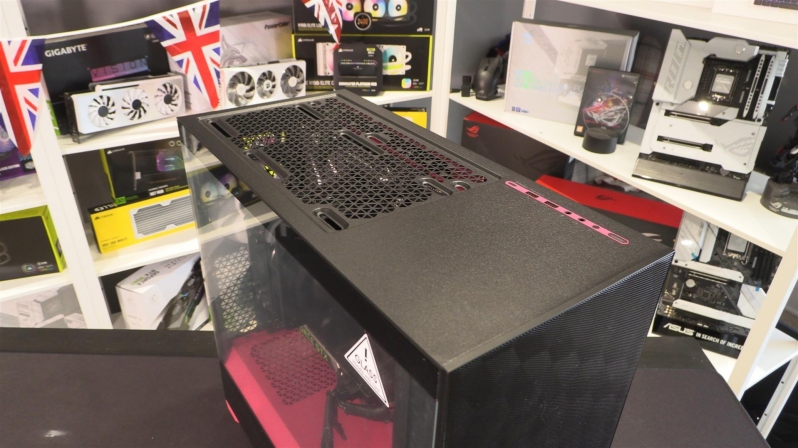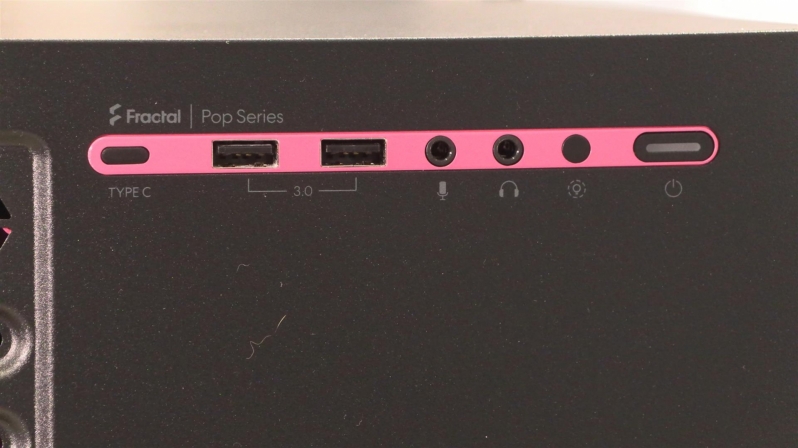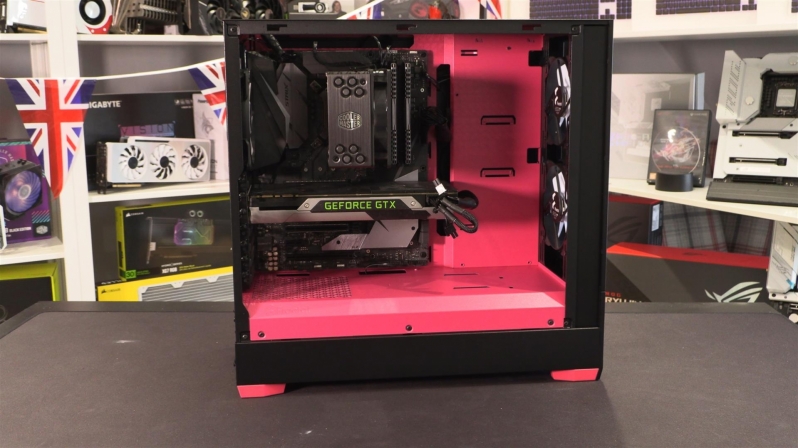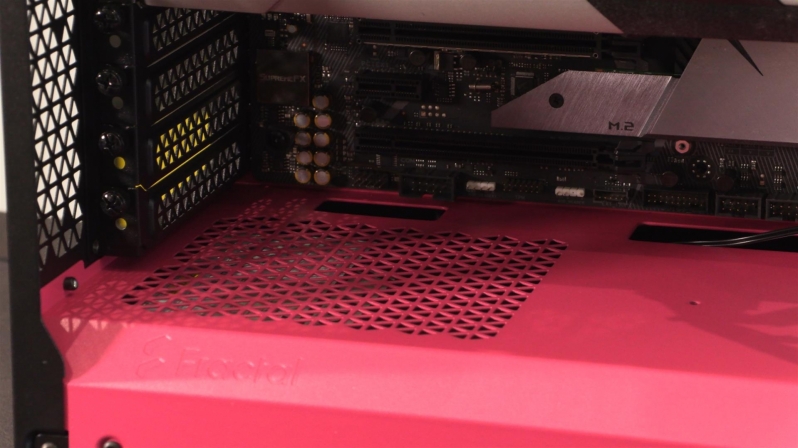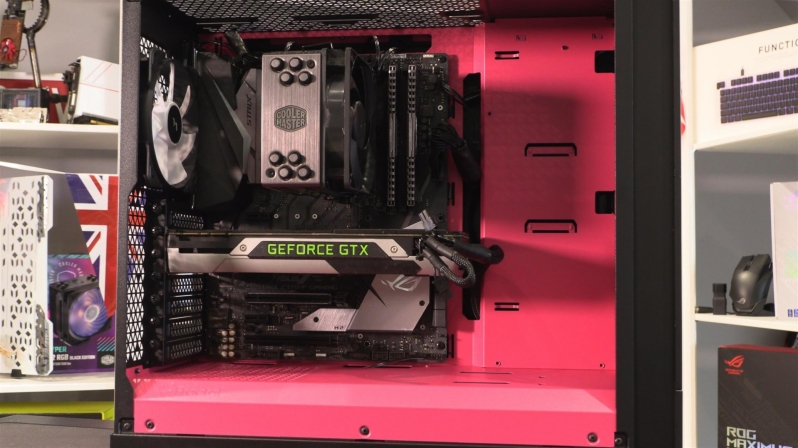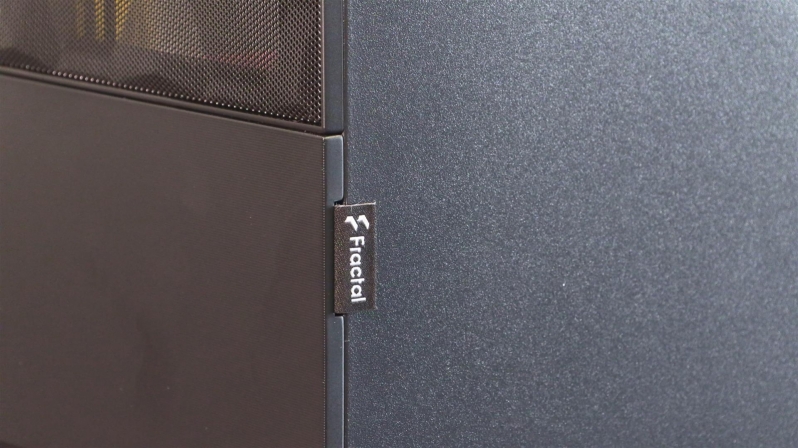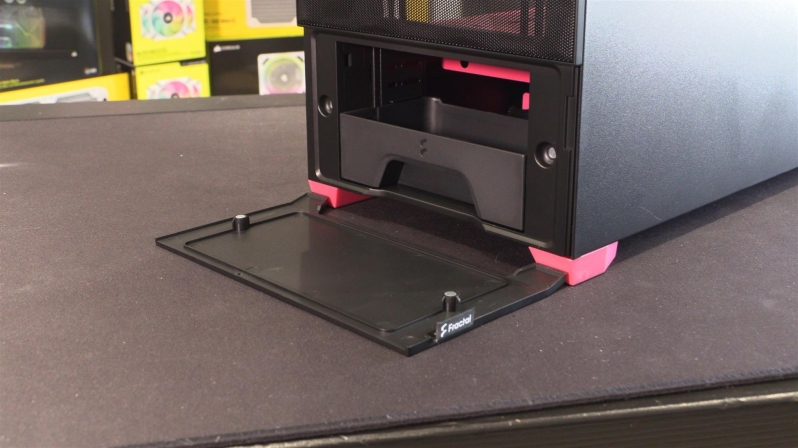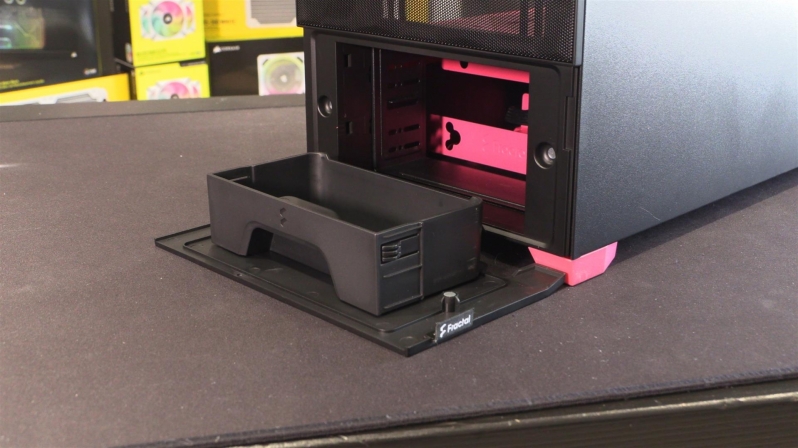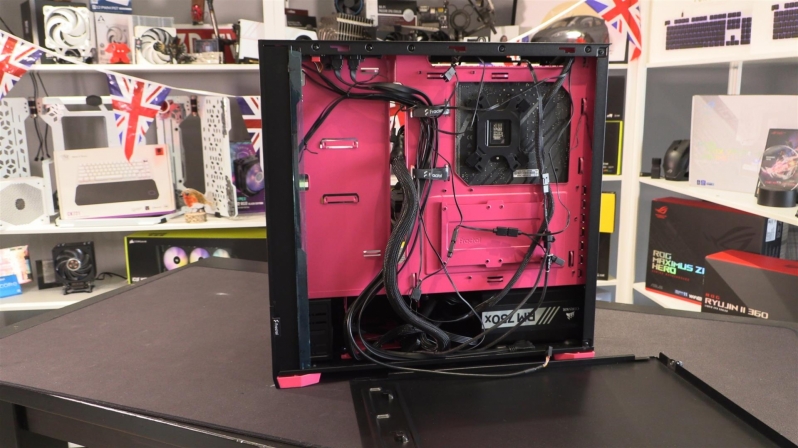Fractal Pop Air Review
Up Close with the Fractal Pop Air
In many ways, Fractal’s Pop Air is a very standard PC case design, at least my modern standards. The case has a mesh front, two intake fans, a single exhaust fan, and space at the top of the enclosure for two exhaust fans. The left side panel of the case is made of tempered glass, and the base of the case has a PSU shroud that also obscures mounting locations for HDDs and SSDs. So far, so standard.Â
What differentiates the Fractal Pop Air is its wide range of potential colour schemes, its hidden mounting locations for up to two bottom mounted optical disk drives (which doubles as a hiding place for other items if you don’t use optical bays), and its inclusion of RGB lighting on most of its models out of the box.Â
Unlike its Pop Silent counterpart, the Pop Air has mounting locations for two 120mm or two 140mm fans, with the option to mount a 120mm or 240mm liquid cooling radiator, assuming that your motherboard has component heights of under 45mm. Spacing might be tight, but you can fit a rad up there.
This location is usually covered by a magnetic dust filter, a filter that will be of limited usefulness if you use this location as an exhaust (which you should).Â
At stock, the Fractal Pop features two USB 3.0 Type-A outputs at the top of the enclosure, audio in/out jacks, an RGB lighting button (to change colour options for those without RGB motherboards) and a power switch.Â
Users can upgrade this case with a USB 3.1 Type-C (10Gbps) connector if they wish. This optional extra ships for £7.99 in the UK.
Inside the pop Air we see the magenta segments of this chassis on full display. The feet of the chassis are magenta, and so are the top of the case’s PSU shroud and the case’s motherboard tray.Â
To be honest, this makes the case’s use of RGB lighting a strange choice, as many colours will clash with the pop Air’s Magenta parts. Yes, pink lighting will match, and white lighting will look good, but as we will mention later, we would have liked to have seen Fractal invest in better fans, and not on RGB lighting. Â
Â
As we can see, the PSU shroud of the Pop Air is designed to allow PSU fans to either face up or down. it is up to you whether you choose to have your PSU intake outside air from the bottom of the chassis or air from inside the enclosure. Either way, there are perforations to enable PSU airflow. Â
The Pop Air is a full ATX chassis that supports standard sized motherboards with up to seven PCIe slots, and has all of the cable routing options that users could need. None of this case’s cable routing locations are grommeted, and are simply holes to the other side of the enclosure. This can lead to untidy cabling if you are not careful, but this can be avoided easily by using a few cable ties.  Â
Â
On the front panel of the Fractal Pop Air is a Fractal tag, which we found to be an odd addition. To our surprise, this add-on turned out to be a useful feature, as this panel is magnetically attached and can be removed every easily. This reveals a hidden compartment of the Pop Air, which has a handy storage container. This compartment can also be used to install optical disk drives, for those that still use them.
Whether you use it for storage, or for installing some optical media bays, Fractal’s Pop Air’s hidden compartment is a useful addition. It makes use of otherwise unused space, and gives those who are hanging onto their optical media a little love. Optical media may not be used much anymore, but it’s far from dead.
Â
As far as cable management goes, the Fractal Pop Air has a very standard design. There is space for some mechanical hard drives, some mounting slots for SSDs behind the case’s motherboard tray and there is a large number of cable tie mounts to make cable management a breeze.Â
We didn’t try to make things overly tidy with this build, just to highlight how we can make things look clean on the other side of this chassis with relatively little effort. The Pop Air is an easy case to build in, like most modern ATX enclosures.



